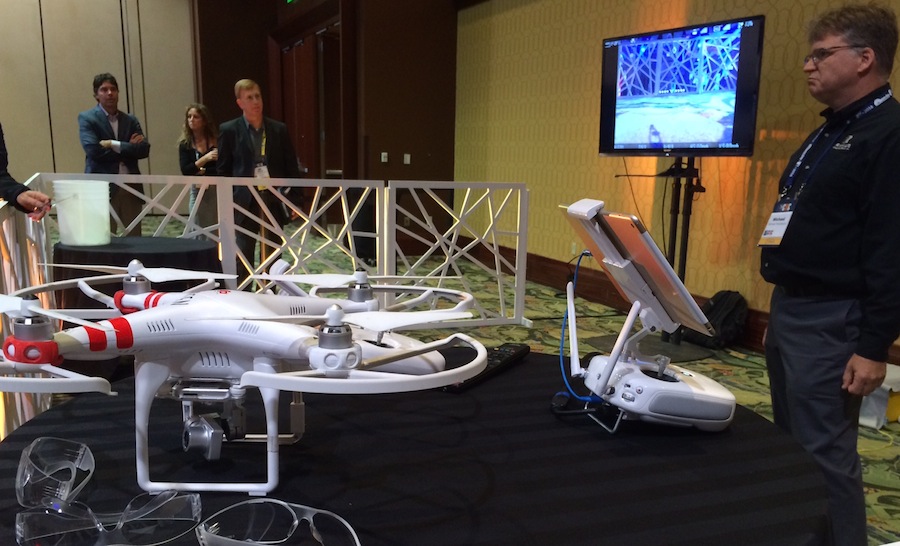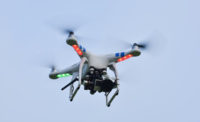In a big room at the Marriott Orlando World Center in Florida, where the International Risk Management Institute held its annual conference Nov. 6-9, a pilot floated a small white drone fitted with a camera about 10 ft above the floor. The demonstration proved to be one of the most popular during the conference. Only the safety glasses on a table hinted at any potential danger.
Across the corridor, in another room, two Liberty Mutual insurance experts and the director of environmental safety and health for Turner Construction Corp. struck a more cautious chord on drone risk management. Their advice: follow rigorous safety procedures and insure the risks.
Michael Mills, technical director for construction and energy for Liberty Mutual Insurance, told several hundred listeners at a seminar on drone risks about one demonstration he attended. Within a moment or two of takeoff, the drone overturned and crashed to the ground. “Pieces of the propellers came flying at my head,” Mills said. “It raised my awareness about wearing eye protection around drones, even if you are only observing the operation.”
During the seminar, Mills, his colleague Aldo Fucentese, division underwriting manager for Liberty Mutual Specialty-Construction, and Turner Construction Vice President Cindy DePrater gave extensive guidance about how to limit the danger of crashes and injury.
The seminar was timely because drone use for engineering and construction is growing more popular and many advertisements for insurance have created an "anybody can do this" atmosphere. But that isn't the case when it comes to safe operation. One Federal Aviation Administration-certified drone operator, speaking on his website, UAV Coach, talked about nearly killing someone after taking a new DJI 1 quadcopter out of its box and flying the drone without spending enough time training. Nor is the insurance coverage simple. The hull/physical damage coverage is straightforward, but the ISO unendorsed CGL liability policy’s coverage A excludes aircraft in most circumstances—so what would happen with a claim under such a policy is unclear. Nevertheless, a comparatively cheap endorsement can be purchased for non-owned drone operation from different carriers, with $5,000 of annual premium buying a $5 million limit (depending on carrier and various underwriting factors). On its website, UAV Coach claims that a $1-million limit in liability insurance can be bought for $600 to $800 a year, depending on volume, experience and the operator's background.
But don’t celebrate. Operating a drone, or hiring a subcontractor to operate it and to insure you, isn’t something to do on the spur of the moment, the speakers explained. Turner Construction’s DePrater says her company will use drone aerial photography only under special circumstances, after weighing other methods, and then mostly only during weekends, with careful planning that should last about a week. “I’m excited about the future” of drones in construction, she said, “I just can’t say I’m going to fly tomorrow. It takes a week of planning.”
Both DePrater and Mills ticked off extensive precautions needed before drone flights. DePrater said Turner limits any drone to no more than 10 pounds, including attached equipment. In addition to observing all the recently approved rules by the Federal Aviation Administration, Turner requires any drone operator it hires to insure Turner and to provide a licensed pilot as an operator.
Flight plans, risk assessments and pilot credentials including hours of flight experience are important. Under federal rules, drones must remain in view of the operator, not exceed 400 ft and never fly over people.
The drone should be tested before flight and never fly a drone with its battery at less than 25% charge to be sure it doesn’t lose power before landing.
No employee, added Mills, should ever be allowed to take a drone home to use as a toy with family members—something people are always inclined to do. When it comes to the risks involved, he said, drones used by businesses should only be used for business purposes.






Post a comment to this article
Report Abusive Comment